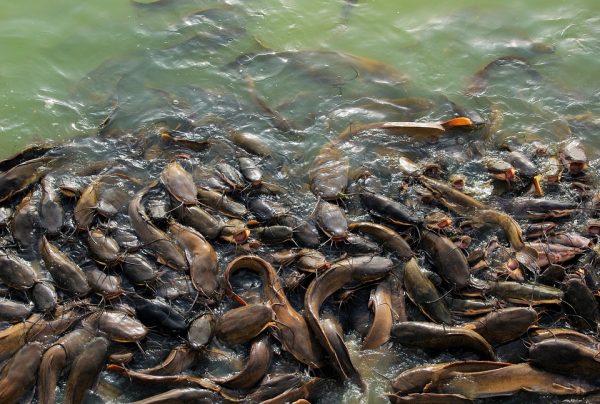The dark, whiskered catfish is one of the most widely cultivated fish species in Nigeria. It’s favored by commercial scale fish farmers as a money spinning breed; that’s because it’s considered a delicacy by a large section of the country’s population. You’ll find a bunch of them swimming about in a bowl at a fish store, ‘waiting’ to be purchased by a customer.
The festive aura around the ‘point and kill’ (as the catfish is sometimes called in southern Nigeria) has grown so much that the country now tops the list of countries which produce the African catfish. The craving for the flesh of this mean faced creature, boiled or grilled, has inspired many fish farmers to fill their hatcheries with its fingerlings, in the hope that they’ll scoop significant gains from selling it.
In specific terms, Nigeria places ahead of such countries as the Netherlands, Brazil, Kenya and South Africa in the cultivation of the African catfish. While there isn’t an abundance of detailed statistics regarding its production, evidence suggests that Nigeria accounts for a fairly significant percentage of catfish reared on the planet.
It’s a bit of a surprise that the catfish has only been consumed by the Nigerian public for less than half a century. Available records suggest that it was domesticated in Nigeria in the 1950s, and was considered for commercial cultivation beginning in the 1970s. In the decades that followed, it gained not just in public acceptability, but became an essential part of the local cuisine.
If there’s any marker of the rapid growth of the catfish business in the country, it’s the fact that catfish constitutes well over half of aquaculture production in Nigeria; that’s up from a mere 7.8% back in 2001, according to FAO records. The UN body also says that about 160,295 tonnes of the fish was produced in the country in 2015.
The presence of waterways in the eastern end of the Gulf of Guinea, as well as the Niger, the Benue, and their tributaries, give Nigeria a big advantage over many of its competitors in global aquaculture. The oceans, in particular, teem with numerous fish species, including the catfish. But it’s in the inland waterways that most of the fish harvesting takes place. Domesticated catfish also forms a large fraction of the fish consumed in the local market.
All of this points to the fact that there’s huge room for further growth in Nigeria’s aquaculture industry. The numbers bear this out: there’s a deficit of over 1 million tonnes in the supply of fish in the country; fairly recently, its fish imports reached 900,000 tonnes.
Although fish farmers have been encouraged to increase their output, the rapid expansion of the local population- and hungry mouths -has ensured that they’ve been playing catch up.
Meanwhile, there’s also a rising demand for catfish elsewhere in the world. This means that farmers and traders back home have a potentially lucrative set of markets to serve. Although getting this done isn’t exactly a straightforward undertaking, it presents them with a goldmine they could exploit if they possess the right resources and strategies.


